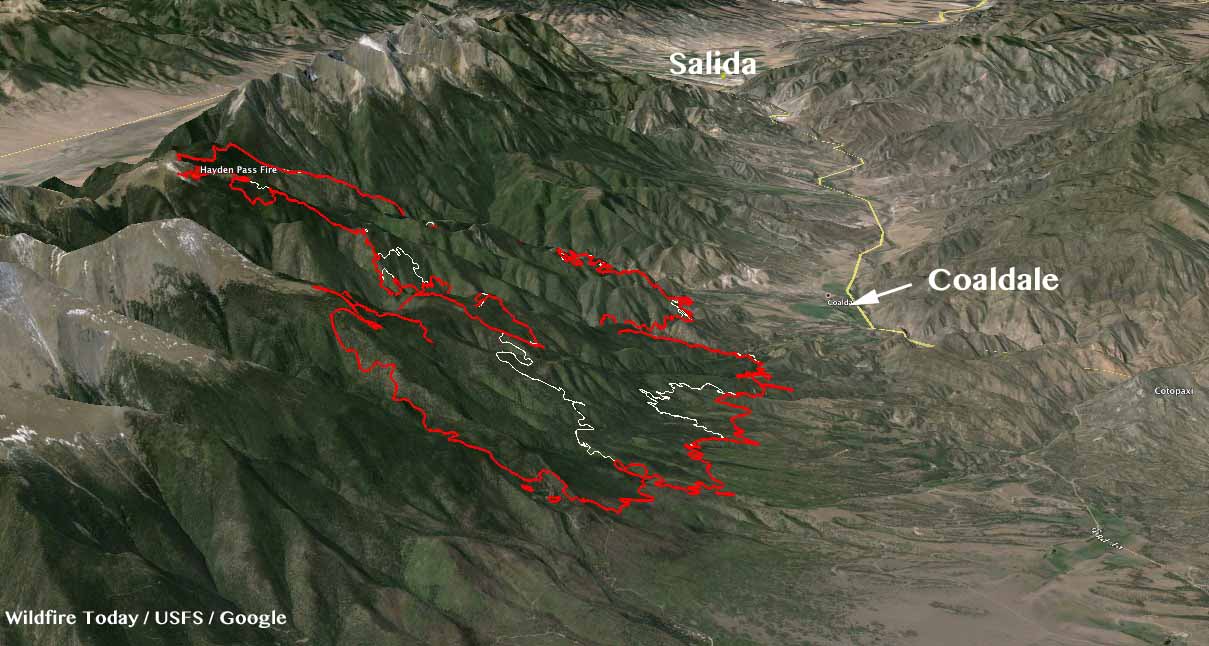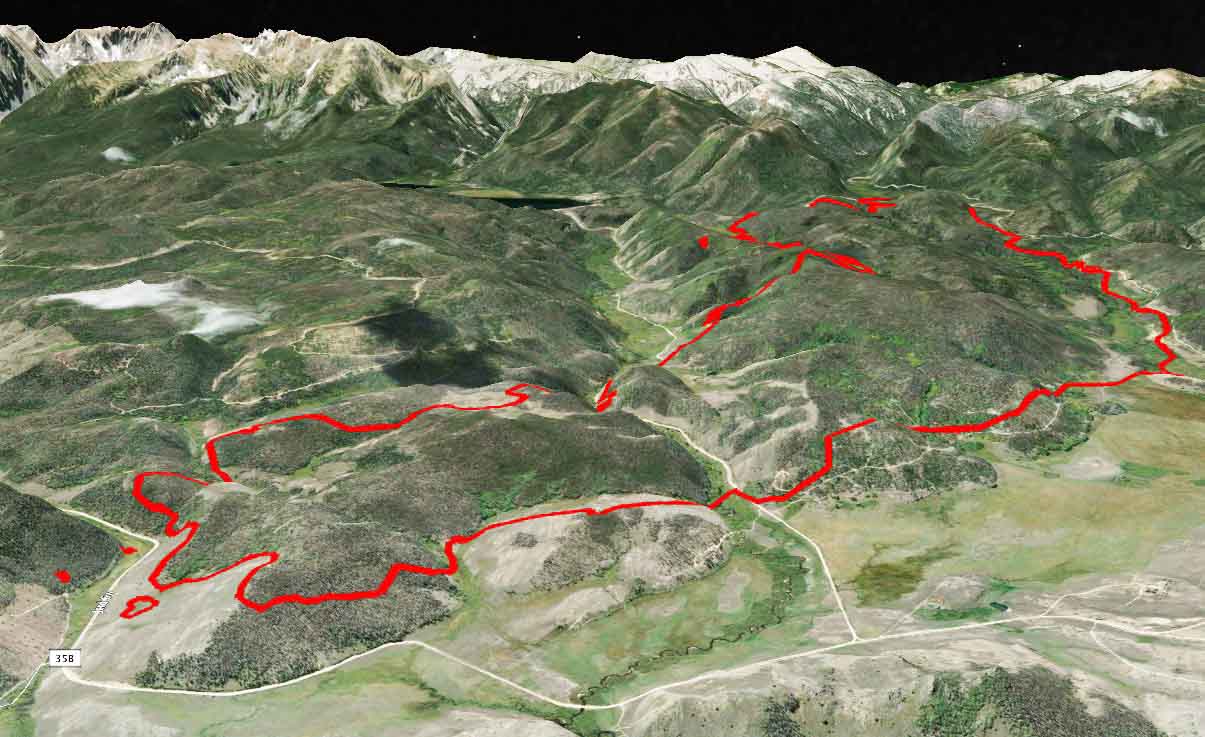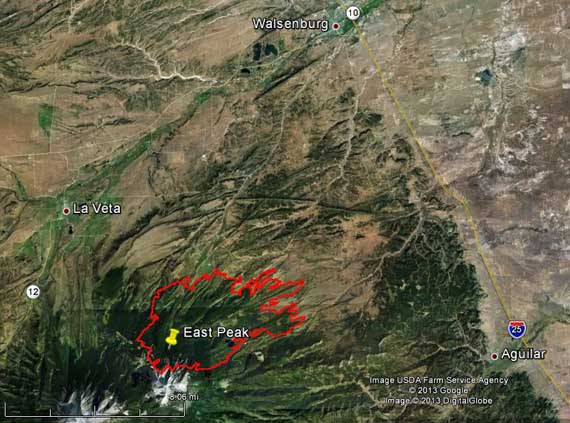(UPDATE at 8:40 a.m. MDT July 15, 2016)

The Hayden Pass Fire near Coaldale, Colorado grew by about 1,000 acres on Thursday and has now burned approximately 15,700 acres.
The incident management team reported Thursday night that they received more helicopters and seemed to imply that suppression of the fire had been hampered by a shortage of aircraft:
Additional helicopters arrived, enabling firefighters to utilize seven ships this afternoon, performing water drops and vital reconnaissance for fires that begin outside the fire perimeter.
Evacuations, road, area and trail closures are in effect and one structure has been destroyed.
The fire has spread south towards the Lake Creek drainage and west of the Duckett fire scar of 2011. Structural protection teams are installing sprinkler systems and removing vegetation around some structures out ahead of the fire.

The weather forecast for the Coaldale area for Friday and Saturday predicts temperatures in the low to mid-80s, southwest winds at 8 to 10 mph, and relative humidities in the low teens with very little chance of rain. Parts of Colorado will be under Red Flag Warnings or Fire Weather Watches Friday and Saturday.
****
(UPDATE at 1:30 p.m. MDT July 14, 2016)

The incident management team for the Hayden Pass Fire issued the information below as part of a Thursday morning update:
…Crews are actively suppressing the fire outside of the Sangre de Cristo Wilderness utilizing structure defense, direct and indirect fire control strategies. Helicopters and air tankers are supporting these strategies, to include retardant drops for structural protection. Firefighting resources are shifting as priorities are completed and new risks are prioritized. Firefighters will continue to suppress the fire using resources and tactics to minimize firefighter risk with the highest probability of success.
The fire continues to burn in the Sangre de Cristo Wilderness. Crews are not currently engaging the fire within the wilderness due to complex terrain causing safety concerns; rather, they will closely monitor fire movement and assist Forest Service staff by informing recreationists of area closures…
The update on the fire posted today at InciWeb did not include the revised size of the fire. Members of the media who attended a press conference this morning reported it had grown to more than 14,500 acres.
The way the U.S. Forest Service describes the management strategy of these less-than-full-suppression wildfires is confusing — to the public and even some firefighters. Officially the Hayden Pass Fire is listed as a “monitor/confine/contain” fire rather than “full suppression” like most fires. But the agency and the Information Officers communicating with citizens do not like to discuss that publicly. It can be scary to some when they hear that the government is not pulling out all the stops in order to put out a fire quickly. And it can be disconcerting to think about a fire within sight of hundreds of homes burning from early July until October 1, which is the “completion” date for the Hayden Pass Fire listed in the excerpt below from the National Situation Report. (See “Cnt/Comp” which refers to Contain or Complete, with Contain being suppression, and Complete referring to less-than-full-suppression.)



Below are two video briefings that were posted on Thursday. The first features Incident Commander Jay Esperance. Following that is Operations Section Chief Travis Lipp. Click on the full screen icons to see larger versions.
****
(UPDATE at 21:20 p.m. MDT July 13, 2016)
At a 10 a.m. press briefing today a spokesperson for the Hayden Pass Fire said it grew yesterday by about 600 acres to just under 13,000 acres
****
(UPDATED at 8:20 a.m. MDT July 13, 2016)

The Hayden Pass Fire 17 air miles southeast of Salida, Colorado added less than 1,000 acres on Tuesday mostly through activity on the southeast side but also on the north side. Dozers constructed fireline from Hayden Creek toward Big Cottonwood drainage while a hotshot crew built line from Big Cottonwood drainage toward Hayden Creek and the dozer line. Aircraft were used in those areas to slow the fire and support firefighters on the ground.
The fire is still 1 to 2 miles southwest of Coaldale.
The weather on Wednesday could be conducive to additional fire spread. The forecast for the fire area 3 miles south-southwest of Coaldale predicts 85 degrees, relative humidity in the low teens, and a west wind at 10 to 13 mph.
Evacuation information is at the Fremont County Sheriff’s Facebook page.
Continue reading “Colorado: Hayden Pass Fire causes evacuations south of Salida”




















